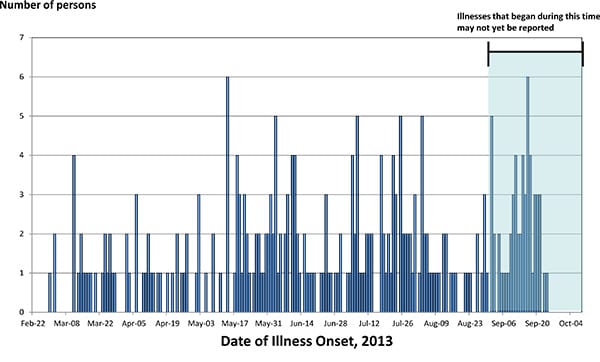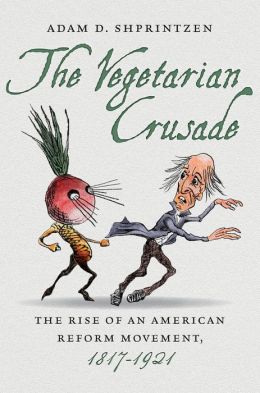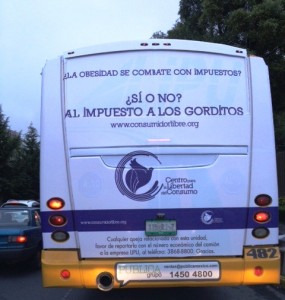Marion Nestle Speaks Out on the Big Business of School Food
By Jocelyn Zuckerman (published originally by On Earth, republished by Civil Eats, and now here).
A year ago, when I was working as an editor at the magazine Whole Living, I oversaw a special issue on food featuring “Visionaries”—people making a real difference in the way this country thinks about eating. There was “The Motivated Mayor” (Michael Bloomberg); “The Integrator” (Harlem chef and restaurateur Marcus Samuelsson); and, among several others, there was “The Badass.”
That would be Marion Nestle. The author of a handful of books that examine the intersection of food and politics, Nestle is a public-health nutritionist and a professor at New York University. She is also one of the most outspoken advocates for a national food system that prioritizes health and the environment over corporate profits. (Michael Pollan ranks Nestle the second-most powerful foodie in America, after First Lady Michelle Obama.)
Recently she published her new book, Eat, Drink, Vote, an admirably approachable look at wide-ranging issues such as farm subsidies, obesity, genetically modified foods, and trans fats.
On the eve of its release, Nestle and I sat down over lunch to discuss, among other things, lunch. Ours was fine—Caesar salad for her, Niçoise for me—but the lunches that dominated the conversation weren’t the ones on our plates. Rather, we talked about the meals that our nation’s kids will be loading onto their trays in the new school year.
It’s an issue that Nestle cares deeply about, and for good reason. For starters, school lunches (and breakfasts) tend to represent the lion’s share of the nutrition that a low-income child will get in a day. (For the truly impoverished, they may be the only meals children get.) The food served sets an example to a “large, captive, impressionable audience,” as Nestle puts it in the book, making cafeterias key battlegrounds in the fight against obesity and poor nutrition.
And it’s certainly a fight. Throughout Eat, which features some 250 food-related cartoons by illustrators around the country, Nestle calls out the entrenched powers—namely, our Congressional representatives and the deep-pocketed food and beverage lobbies to whom they seem ever more beholden—working at cross-purposes to the folks fighting for a food policy focused on promoting our own well-being and that of our environment.
Just look at what happened in 2011, when the U.S. Department of Agriculture (USDA) tried to rate tomato paste based on its true nutritional value. School pizza makers went running to their friends in Congress, who promptly blocked the USDA’s decision. So an eighth of a cup of tomato paste is still credited with as much nutritional value as a half a cup of vegetables. Nestle chose a cartoon that wittily depicts the you-must-be-kidding-me moment (by Pulitzer Prize-winner Mike Peters) for the cover of her book.
There’s no question that school meals are big business. In 2011, the USDA school breakfast program served nearly 12 million children, at a cost of nearly $3 billion, Nestle writes in Eat, while the lunch program served nearly 32 million children, at a cost of $11 billion. The companies involved in providing all that food have a serious interest in holding on to their share of that money, preferably while investing as few resources as possible.
“Any change in the standards means that the products that have been created specifically for school lunches [that pizza, for example] have to meet new standards,” Nestle pointed out over lunch. “And that pisses everybody off”—everybody who’s already making money off school meals, that is.
Which makes it all the more remarkable that those meals have, in fact, gotten better. In December 2010, Congress passed the Healthy, Hunger-Free Kids Act. The legislation marked the first time in a generation that school lunch regulations had been updated. (One telling example of just how much our dietary landscape has changed over the decades: the previous laws featured minimum calorie levels but no maximums.) The new act gave USDA the power to establish nutrition standards for all of the food sold and served in schools.
In addition to lunches and breakfasts, this includes the so-called “competitive foods” available from vending machines and carts. There are now limits on the levels of saturated fat, trans fat, sodium, and calories, and the standards require that snacks be rich in whole grains and provide nutritional value. Drinks can contain no more than 40 calories per 8 fluid ounces, or 60 calories per 12 fluid ounces—numbers that rule out all regular sodas and Gatorades.
Healthier for kids also means healthier for the environment. (Another cartoon in the book, by Joel Pett, aptly illustrates the direct link between “soft-drink pushers” and damage to the natural landscape.) There’s a direct impact on the supply chain when school lunches are heavier on organically grown produce instead of (corn-fed) chicken coated in cornmeal and deep-fried in corn oil, for example.
Given the numbers involved, healthier school lunch standards should ultimately mean a shift in what is being grown and raised in this country. Fewer sodas in vending machines means less demand for high-fructose corn syrup and less acreage devoted to monocultures of corn. Fruit and vegetable salads replacing chicken fingers means less demand for antibiotic-laden factory-farm birds. In a logical world, greater demand for healthy crops to produce federal school lunch meals would translate into more support for them in the next Farm Bill.
There’s more to making school lunches better than just changing the rules, though, Nestle explained. The food has to taste good, too, and the kids have to actually eat it. “I have been in some of the best school lunch programs in the country,” she said, “and the kids weren’t eating.” They may avoid the meals for social reasons, she explained. “It may have a bad reputation. They may not like the way the cafeteria looks. They may not have time to eat.” (She blames the no-time-to-eat problem in part on an educational culture that’s fixated on testing and suggested that programs teaching kids about growing and cooking food can help overcome some of the other barriers.)
I asked Nestle about who’s getting it right, and she replied that the now-somewhat-famous program at the Calhoun School, located on Manhattan’s Upper West Side, represents “the Platonic ideal” of what a school lunch operation can be. It doesn’t come as a huge shock that children eat well at an educational institution that charges in the neighborhood of $40,000 a year per student, but the man behind the program, French Culinary Institute-trained “Chef Bobo,” doesn’t just cook for rich kids.
He is a frequent speaker at conferences around the country on school lunches and healthy eating, and he regularly brings in cooks from other schools to intern in his kitchen, which features produce and chickens sourced from local vendors and includes a vegan option every day (see one of his recipes to the left). Several of Bobo’s sous chefs have gone on to start similar lunch programs at other schools, including at a public charter school in the Bronx.
Nationwide, Nestle said, there are more farm-to-table programs linking students with local farmers than ever before. Schools in cities and in the countryside are sowing their own kitchen gardens, and the three-year-old Food Corps supports a network of volunteers who work in poor communities to teach kids about healthy food, build school gardens, and help bring better food into public-school cafeterias.
Sure, school lunches still need work—someday that tomato paste will be called out for what it really is—but the fact is, we’ve come a very long way. “Look back ten years!” Nestle said in regard to the overall shift in this country’s dietary landscape. “Healthy food has gone mainstream.” Despite the entrenched interests, she said,changes are happening, in large part because Americans better understand the importance of what they put in their mouths. With Eat, Drink, Vote, the badass lunch lady furthers the cause.
ABOUT THE WRITER
Jocelyn Zuckerman is the former articles editor at OnEarth, the former executive editor of Whole Living and deputy editor of Gourmet, where she won a James Beard Award for feature writing in 2002. She is also an adjunct professor at the Columbia University Graduate School of Journalism and has written for the New York Times Magazine, Parade, and Plenty.






